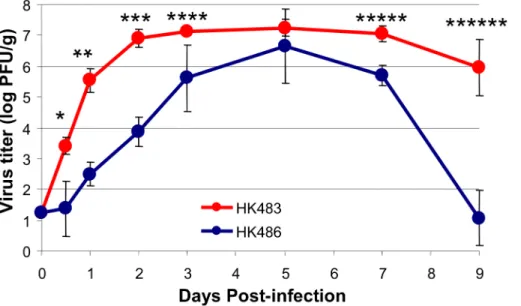Viral replication rate regulates clinical outcome and CD8 T cell responses during highly pathogenic H5N1 influenza virus infection in mice.
Texto
Imagem

Documentos relacionados
In our previous study, we reported reduced antibody response to seasonal influenza A(H1N1) and A(H3N2) vaccine virus in children aged 6–17 years if the vaccine viruses
The objectives of this study were to determine the incidence of infection by respiratory viruses (RSV; parainfluenza viruses 1, 2 and 3; influenza A and B viruses; and adenovirus)
response to viral infection during protein energy malnutrition in mice is due to. changes in microenvironment and low numbers of viral-specific CD8
Out of the 41 influenza A cases, nine cases (21.9%) were coinfected with other viruses, with a similar frequency among children and adults (p = 0.47), and seasonal influenza
Moreover, a more functional influenza- specific CD8 T cell population and a lower frequency of KLRG1 hi CD57 hi influenza M1-specific CD8 cells predict a stronger antibody response
these animals seemed to regain control of viral replication by day 4 p.i., which perhaps corresponds with the early entry of cells of the adaptive immune response as
To test whether altered receptor-binding properties of the viral HA glycoprotein of highly pathogenic A/Vietnam/1203/04 (H5N1) influenza virus can reduce susceptibility to NA
To elucidate the mechanisms of pathogenesis of highly pathogenic avian influenza H5N1 in humans, we identified here the commonalities and differences of host-response signaling